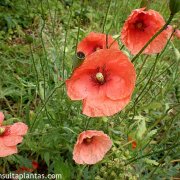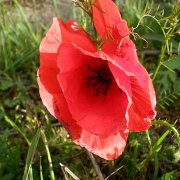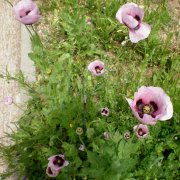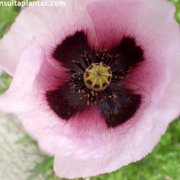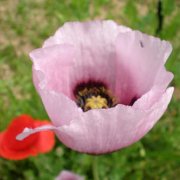Care of the plant Papaver rhoeas or Common poppy |
|
The genus Papaver, family Papaveraceae, comprises 100 species of annual and perennial plants native to the Northern Hemisphere and Australia. Some species are: Papaver rhoeas, Papaver glaucum, Papaver somniferum, Papaver alpinum, Papaver pilosum, Papaver nudicaule, Papaver orientale, Papaver bracteatum. Common names: Common poppy, Corn poppy, Flanders poppy, Red poppy, Field poppy. This species is native to Africa, Asia and Europe. They are herbaceous plants of size that reach 60 cm (1.96 feet) in height. The leaves are hairy, very lobed and bluish-green or deep green. The showy flowers appear at the end of the stem and have 4 very fragile petals of red, yellow, white, lilac or purple. They bloom in spring or summer. They produce a capsule-shaped fruit where the seeds that fall to the ground when the fruit is opened are housed. Common poppy is used in rockeries, to create groups and in pots for balconies and terraces. Opium is extracted from the Papaver somniferum species and the seeds are consumed from other species and edible oil is made. Papaver rhoeas need full sun or semi-shade exposure and warm or mild temperatures. The species that tolerates the cold is the Papaver alpinum. Red poppy can grow in any soil that is well drained; it prefers soils poor in organic matter. Water moderately (once a week, for example) all year round because Field poppy is a very sensitive plant to overwatering. Fertilize with compost in the fall. Common poppy is a very resistant plant to pests and diseases; sometimes it can be attacked by aphids. Flanders poppy is propagated from seeds sown in spring. |
Images of the plant Papaver rhoeas or Common poppy |
Find plants
Papaver rhoeas or Common poppy | Care and Growing
© 2025 FavThemes
